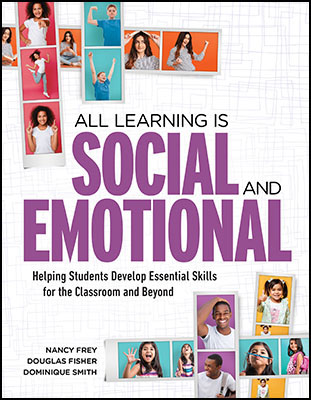
A lot of people have enjoyed the ASCD webinar I shared a couple of weeks ago. So, here’s another one.
This comes from Nancy Frey, a Professor of Education Leadership at San Diego University. She’s written many books on education and in this webinar drew on material from her latest.
Quite rightly, many educators have been recognising the importance of children developing their social and emotional skills – not only so that they can function effectively in the classroom and school, but also because these are vital skills for the rest of their lives.
Unfortunately, in some places the temptation for teachers has been to believe that the solution is an SEL syllabus or curriculum – that SEL is somehow something to be treated separately. I believe quite rightly Frey emphasises the desirability of integrating the concepts of SEL in to everyday life in the school, the classroom and lessons generally.
The webinar does a very good job of summarising where SEL concepts have developed from and how far they have reached. This idea of weaving the SEL learning in to the general day to day learning can be daunting for some teachers. The website does a good job of giving pointers for how to embark on such a journey as a teacher. The content is delivered at a very accessible level.
ASCD Webinar Log In – Nancy Frey – All Learning is Social and Emotional
Some may find the content of this webinar excellent for running teacher training and CPD sessions, discussions and dialogues, or even within professional learning community small groups where teachers see SEL as an important area on which to focus.
Filed under: Assessment, Educators of tomorrow, Leadership, Life, School, Teaching Practice | Tagged: agency, ASCD, ASCD webinar, children dealing with emotions, developing skills for life, Emotional learning, emotions, feedback, getting feedback, giving feedback, grit growth mindset, identifying emotions, identity, integrating SEL, life skills, Nancy frey, peer learning, SEL, self talk, social learning, teaching practice, the stories we tell ourselves | Leave a comment »

